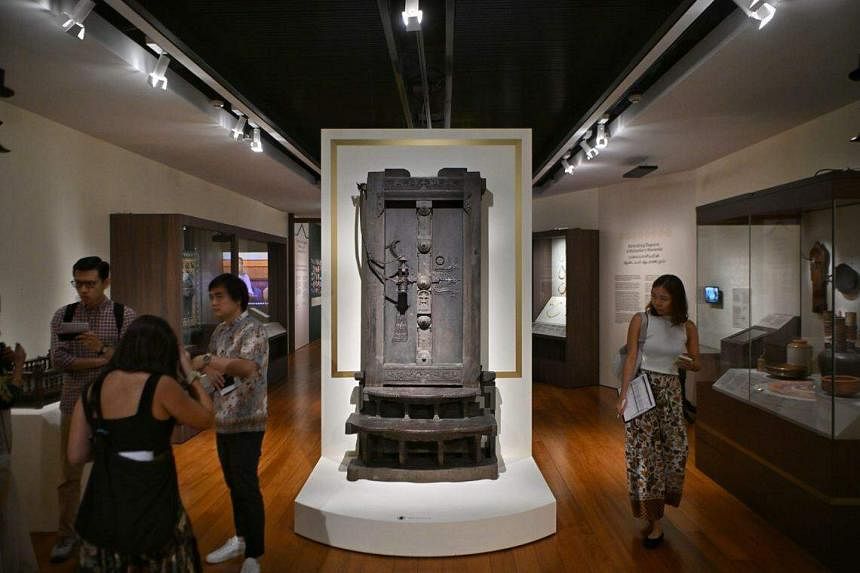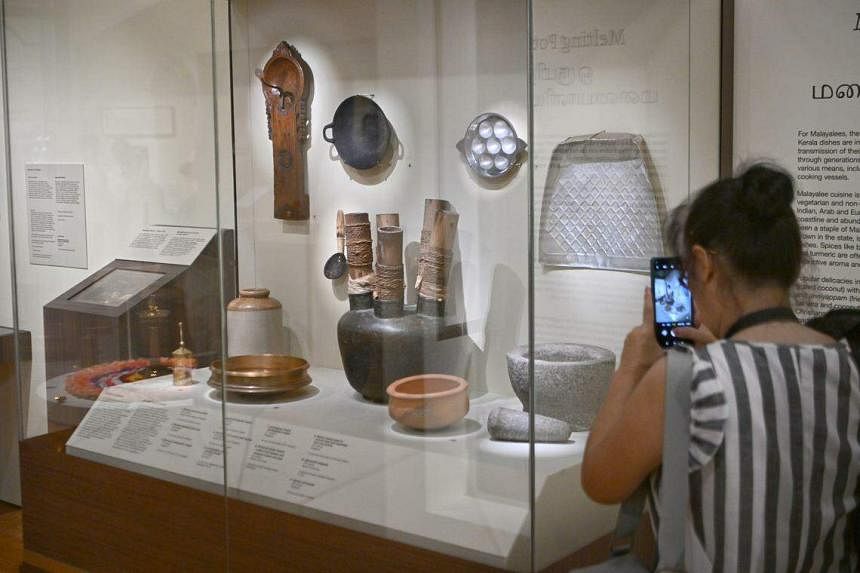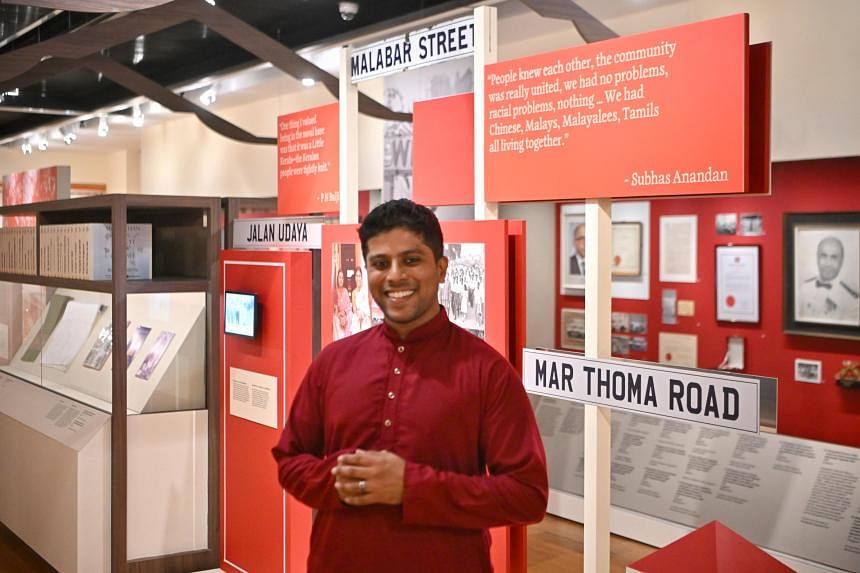SINGAPORE – To most people social worker Shafiq Abdul Rahman meets in Singapore, he is Indian by race.
Even his identity card said so, until about three years ago, when Mr Shafiq, 28, changed it to Malayalee – in line with the heritage of his great-grandparents, who were from the southern Indian state of Kerala.
A video on his and other young people’s experience of being a Malayalee in Singapore is among more than 200 artefacts and displays on show at a new exhibition at the Indian Heritage Centre (IHC) that celebrates the history and culture of the Malayalees – the second-largest subgroup in Singapore’s Indian community.
Speaking to The Straits Times at the exhibition’s launch at the IHC in Campbell Lane on Nov 24, Mr Shafiq said that as an Indian-Muslim in Singapore with Malayalee heritage, he had questioned his identity, having been taught Tamil in school – the language of the biggest Indian subgroup here – and also attended religious classes in Malay, while hearing Malayalam spoken at home.
Malayalam is the language spoken in Kerala.
It was after learning about the history of the Chinese-Malay-Indian-Others classification model in university that Mr Shafiq decided he did not belong to the “Indian” group, which he felt was a general label that did not accurately represent his heritage.
“Because I am born here, this is my country, my home, I am Singaporean,” he said. “But my race is not Indian, it’s Malayalee – that is my cultural background.”
The video Mr Shafiq was featured in is an example of community involvement in the exhibition titled Ente Veedu, My Home: Malayalees In Singapore, which invites visitors to learn more about the group’s identity and its intricacies by considering what “home” means to members of this subgroup.
The exhibition is the third since IHC’s launch in 2015 that the centre has curated in collaboration with community members, such as Dr Anitha Devi Pillai, the exhibition’s guest curator and an applied linguist who has studied the Singaporean-Malayalee community for about two decades.
Across four themed zones, such as one that displays items used in homes, the exhibition traces the history of Malayalees here, from migration to settlement and contributions, and also reflects on the community’s evolving notions of home and identity.
Other displays include several wedding pendants that collectively demonstrate religious diversity within the community that has Hindus, Muslims, Syrian Christians and Catholics as well as those of other faiths in its ranks.
A Christian pendant, for instance, carries a diamond cross, while a Muslim wedding chain is adorned with black beads.

Dr Anitha said she hopes visitors to the exhibition will understand that there is diversity within Singapore’s Indian community, adding that visitors can see how a “minority within a minority group” continues to thrive.
She cited how Singaporean Malayalees continue to celebrate Onam, a major festival that is not officially recognised as a holiday here.
She added that many names may be familiar to exhibition-goers – a reflection of the community’s contributions over the years.
Prominent Singaporean Malayalees featured include athlete Shanti Pereira, who won gold and silver medals at the recent Asian Games in Hangzhou, China, activist and author Constance Singam and former president Devan Nair.

Speaking at the exhibition’s launch, Mr Edwin Tong, Minister for Culture, Community and Youth and Second Minister for Law, said the community has been an integral part of Singapore’s history, including during the early years of nation-building.
Mr Tong added that the community embodies the Singapore spirit with a deep appreciation for diversity, and encouraged those in the community to continue practising and passing on their culture.
“If you don’t pass it on, and you don’t take the responsibility strongly enough, carefully enough… a special part of Singapore will be gone,” he said.
The exhibition runs until Sept 15, 2024, and is open from 10am to 6pm from Tuesdays to Sundays. Admission is free for Singaporeans and permanent residents.


